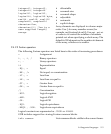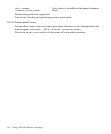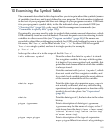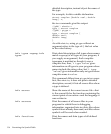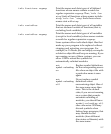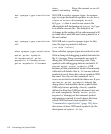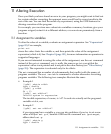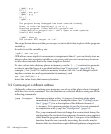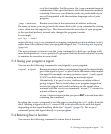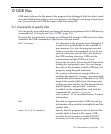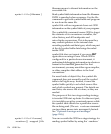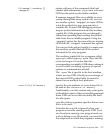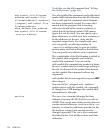or of local variables. For this reason, the jump command requests
confirmation if the specified line is not in the function currently
executing. However, even bizarre results are predictable if you
are well acquainted with the machine-language code of your
program.
jump *address Resume execution at the instruction at address address.
On many systems, you can get much the same effect as the jump command by storing
a new value into the register $pc. This does not start the execution of your program
at the specified address, instead only changes the program counter.
For example,
set $pc = 0x485
makes the next continue command or stepping command execute at address 0x485,
rather than at the address where your program stopped. See “Continuing and stepping”
(page 64).
The most common occasion to use the jump command is to back up―perhaps with
more breakpoints set―over a portion of a program that has already executed, in order
to examine its execution in more detail.
11.3 Giving your program a signal
You can use the following command to send signals to your program:
signal signal
Resume execution where your program stopped, but immediately
give it the signal signal. signal can be the name or the number
of a signal. For example, on many systems signal 2 and signal
SIGINT are both ways of sending an interrupt signal.
Alternatively, if signal is zero, continue execution without
giving a signal. This is useful when your program stopped on
account of a signal and would ordinary see the signal when
resumed with the continue command; 'signal 0' causes it to
resume without a signal.
signal does not repeat when you press RET a second time after
executing the command.
Invoking the signal command is not the same as invoking the kill utility from the
shell. Sending a signal with kill causes GDB to decide what to do with the signal
depending on the signal handling tables (see “Signals” (page 67)). The signal
command passes the signal directly to your program.
11.4 Returning from a function
You can use the following command to return from a function:
11.3 Giving your program a signal 121



